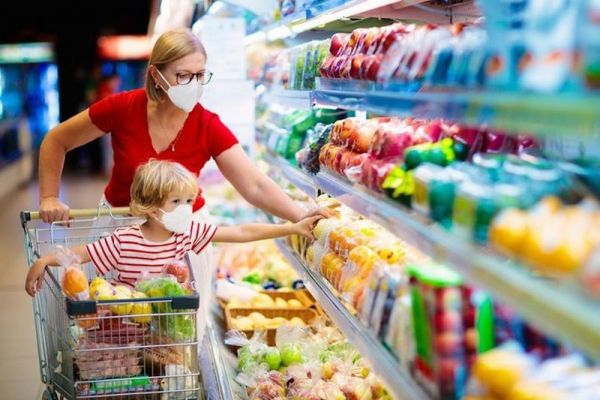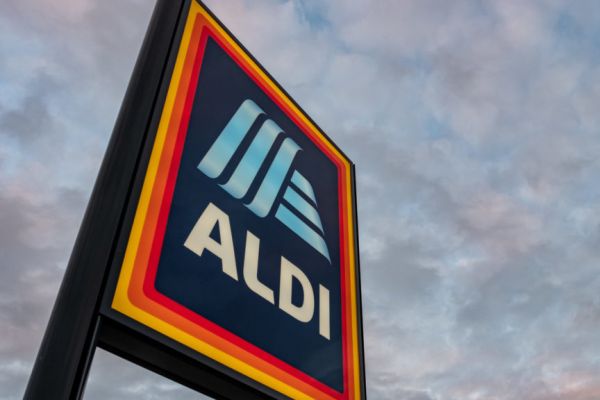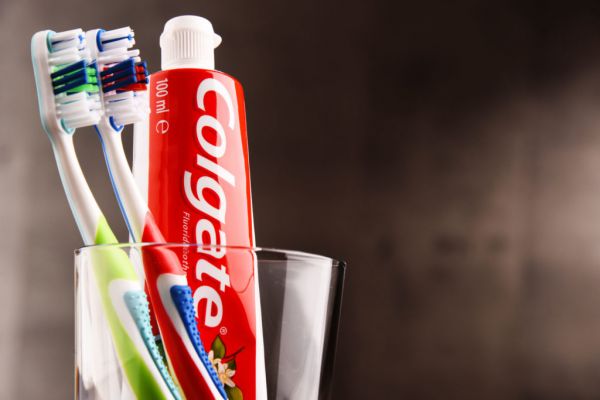Retail industry consultant Malachy O’Connor surveyed over 600 shoppers nationally from 26 to 28 April. His findings, combined with the most recent market share data from Kantar, reveal some interesting behavioural trends
The data from Kantar Worldpanel for the 12 weeks to 19 April 2020 places SuperValu in top position with 22.2% of the Republic of Ireland grocery market, ending Dunnes Stores’ nineteen period run at the top. Tesco and Dunnes are matched on 21.7%. Lidl have taken 12.0% share, just edging Aldi who are on 11.8%. ‘Others’ are on 10.7%, capturing the combined performance of symbols, independents, butchers, M&S, Iceland, Dealz and other operators. This data is all about coronavirus and the inherent strengths and weaknesses of the various grocery retailers.
12 w/e 19th Apr Share +/- YOY
SuperValu 22.20% 0.8%
Tesco 21.70% -0.1%
Dunnes 21.70% -0.5%
Aldi 11.80% -0.1%
Lidl 12.00% 0.5%
Others 10.70% -0.5%
Year-on-year share comparison
When the previous data was released it covered sales from 30 December up to 22 March. So, there were 8 regular weeks and 4 pandemic weeks where performance was influenced heavily by the panic buying witnessed during the week of 9 March following the schools closure announcement. This time the data covers the period from 27 January to 19 April. As such, there are 4 regular weeks and 8 pandemic weeks that capture the panic buying and the impact of the lockdown shopping patterns. The difference is striking.
Restrictions & fear drive decisions
The key drivers for these new shopping patterns are restrictions and fear. Schools were closed on 12 March, pubs on 15 March. All other non-essential businesses were closed on 27 March and people were told to stay within their family nucleus and within a 2km radius unless shopping for groceries or health care. Reported new cases and deaths were growing in this period and shoppers were genuinely scared. 72% of respondents were wary of going to the supermarket for fear of picking up the Covid-19 infection.
Retailers have responded by introducing new sanitation, physical distancing, and customer density protocols, but shoppers are still spooked. 54% of shoppers are wearing a mask or gloves while supermarket shopping. 46% of respondents are wary of buying unpackaged foods like loose fruit & veg, delicatessen and in-store bakery. Fear of the virus is only one dimension. The other fear revolves around the economic outlook. 40% of respondents had already taken a significant hit to their income. Only 11% were optimistic for the long-term outlook of the economy in their region.
New shopping patterns
The restrictions on freedom of movement, fear of the virus and foreboding for our economic outlook have had an instant and marked impact on shopping patterns. Shoppers are assessing how much they spend, and how they spend it. It is a highly turbulent time and every time the context changes, so do the shopping patterns.
Grocery spend increase
70% of respondents agree or strongly agreed that they are spending more on their groceries since the Covid-19 crisis kicked off. This is not surprising since virtually all out of home food and drink consumption has switched to in-home. Except for a small amount of take-away food, all restaurants, cafes, and canteens are closed so millions more meals are being prepared and consumed at home every day, with the ingredients being purchased in a supermarket.
60% of respondents said they were buying more scratch ingredients for home cooking which is borne out in the patchy availability of flour and baking essentials in-store. Some customers may also have seen their grocery bills increase as they have been buying extra items, building a buffer stock in their store cupboards. Equally, if retailers are avoiding doing some promotional activity, like multi-buys, to inhibit bulk-buying, then the average selling price may rise slightly. And if shoppers are buying whatever is available on-shelf and doing it in a store they may be unfamiliar with, then they could easily spend more than normal.
All of this is borne out in Kantar’s data which shows that sales increased by 17.2% for the 12 weeks to 19th April. This is made up of three distinct 4-week phases. In February it was largely business as usual, in March, we saw panic buying where sales for the month were up about 27% year-on-year (and up over 50% during the week ending 9 March) and then the lock-down phase, where sales were up 22.5% despite a subdued Easter weekend event.
Trips decrease and shoppers stay local
Kantar reckon that the average household has shopped less frequently, understandably, if you are concerned about picking up the virus infection. My own research has shown that the major change has been that the big weekly shop is bigger, and that shoppers have reduced the repertoire of second shops and top-up or emergency shops.
If a customer has a big supermarket of choice, a preferred discounter and preferred top-up or convenience store, then the overall number of trips has been decreased. Shoppers are much less willing to shop around, risking exposure to the virus, so they’re making a choice on whether to stay very local in a neighbourhood c-store, or drive a limited journey, turning left into the big supermarket, or turning right into the discounter, instead of visiting both.
The key issues here are the sense of safety and exposure. Some shoppers may decide that a small, familiar local convenience store, with no queues or crowds is a safer option. Equally, many are deciding that the bigger supermarkets, with lower densities of customers inside and a bigger range on-shelf are a safer option.
Switching
After the shopper decides where will take their chances, its down to the specific store to do a good job and win their shopping on the next trip, or to fall short and lose them altogether. My research points to a significant churn in shoppers changing their preferred store for the big weekly shop. In the weeks since the Covid-19 crisis kicked off, 23% of respondents had changed where they did their main weekly shop and its fascinating to see why they are switching.
Of those that had switched, there were diverse reasons:
26% had switched to stay ultra-local
25% switched to bigger stores that had more space and were better able to implement social distancing.
23% had switched to quieter stores to avoid queues and crowds
20% were unhappy with the hygiene and sanitation protocols in their previous store
11% had switched online to SuperValu.ie citing the availability of slots and click & collect options
7% switched because their store of choice did not have the full range or had availability issues (forcing the shopper to go to another store).
6% switched in search of lower prices, given job losses and low consumer confidence
Online Groceries
Kantar estimates that 10% of Irish households have received an online delivery in the four weeks to 19 April, up from 6% last year. Considering that 72% of my respondents were wary of going into a supermarket for fear of contracting Covid-19, it is surprising that the percentage is not higher.
The major factor here is capacity. Tesco, the main player, simply did not have sufficient capacity to deal with demand. In mitigation, they have urged consumers to ‘think before you click’ to ensure that slots are kept available for vulnerable consumers. They have also moved to increase the number of delivery slots and the number of click & collect points. In my own research, I found that before Covid-19, 3.75% of main weekly shops were done online (the vast majority via Tesco.ie).
However, following the crisis I found that 5.70% of main weekly shops were done online, a +52% increase. SuperValu were the main beneficiary here, given that they had greater spare capacity. Crucially, 35% of respondents stated that they would prefer to do an online grocery shop. The only limiting factors are the delay time on slot availability and the issue of reserving slots for vulnerable shoppers. We know that shoppers often say and do different things, but this points to a potentially marked shift in consumer behaviours. It is difficult to imagine just how disruptive it would be to have 35% of shoppers doing their main shop online.
Considering that most retailers will have both won and lost some switching shoppers, its useful to see the net effects. Aldi appear to have gained least and lost most main weekly shops, primarily as a victim of their own success. The single biggest concern for these shoppers is that Aldi was too busy, too crowded and found it more difficult to enforce social distancing. In these cases, the primary destination was to Tesco with the bigger stores and wider aisles.
Musgraves appear to have benefited most overall. SuperValu have gained most and lost least in terms of switching main weekly shops - for two key reasons. Firstly, shoppers are opting for the ‘closer’ option which, in more cases, is a SuperValu, thanks to their superior store numbers. Secondly, thanks to the availability of online ordering, both for delivery and click & collect. Interestingly, Centra have gained a significant number of main weekly shops as customers opt to stay ultra-local in smaller, more familiar environments. Understanding this narrative helps make more sense of the Kantar data just released.
SuperValu on 22.2% share have gained 0.8% points year-on-year, having been in a position of losing -0.5% points year-on-year just 9 periods ago. Their trajectory has been aided by price investment and media activity since Q3 of 2019. The major pull factor now is store numbers and proximity to customers, but it is worth noting that SuperValu shoppers are seeing less reasons to push them into the arms of another retailer. The operators are clearly doing a good job on customers service, hygiene protocols, physical distancing, and range availability.
Tesco are down -0.1% points year-on-year on 21.7% share which, taking account of the Blackrock Shopping Centre store loss, is a good result. They have benefited from having some big stores with wider aisles and are doing a good job with availability, hygiene protocols and physical distancing. Their key challenge was that their online business did not have the capacity to deal with the uplift in demand, and some shoppers were lost along the way. In addition, with their range superiority, strong supply chain, and good controls on shopper densities, they are a very popular destination as a one-stop shop. Unfortunately, this means that there is a bigger chance of queues outside. Some shoppers were not willing to queue.
Dunnes are matching Tesco in joint second place on 21.7%, down -0.5% points year- on-year. This comes after nineteen consecutive periods in the top spot and represents a major turnaround, having lost a full 1% of market share in the last two periods. As the only Big 3 retailer without an online grocery offer, the current crisis must have caused them to re-look at their solely bricks and mortar grocery strategy. However, we do know that online groceries are at best cost neutral and are frequently loss-making. None of us can see inside the Dunnes P&L, but I would guess that even if they were number three for sales, they could be number one on profitability.
Lidl’s performance has stayed consistently strong since the crisis. For the last three periods they have posted market share numbers +0.5% points year-on-year. They have a 20-store advantage versus Aldi and had previously lagged Aldi on overall share. This pointed to them having significant capacity to grow sales at a store by store level. So, when shoppers were getting spooked by crowded stores and long queues elsewhere, a significant number of them found that Lidl was a good alternative. Unfortunately, at a local level, there may have been an even better alternative, so Lidl lost slightly more main weekly shops than they gained.
Aldi have grown sales slower than the market and have lost share year-on-year, down 0.1% points to 11.8%. This is a big drop-off considering that for most of last year, their store openings and refurbishment programme had given them market share growth up to 1.1% points. Project Fresh had successfully attracted thousands of new shoppers, but the stores were sometimes congested, especially during big seasons like Christmas when additional stock displays filled the aisles. That is why Aldi share is down year-on-year currently.
However, my theory is that there are two kinds of retailers currently. Firstly, retailers that are still working hard on supply chain and availability issues. Then there are retailers that have a bullet-proof supply chain, whose thinking has already moved on to bigger issues. My guess is that Aldi are not sweating too much about their current market share. Rather, they are preparing for the upcoming recession, and we know what happened last time.
Malachy O’Connor
retail industry consultant & director at Food First Consulting www.foodfirstconsulting.ie
partner at International Private Label Consult www.iplc-europe.com






